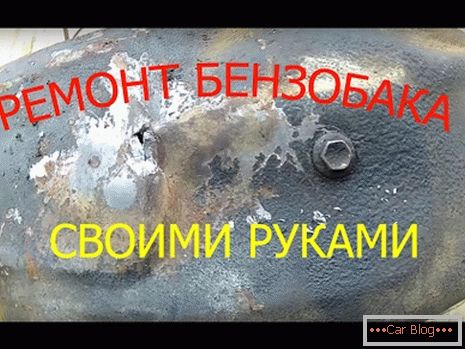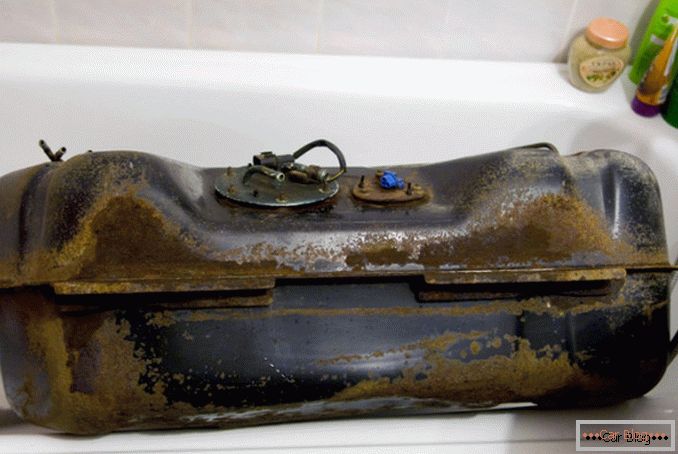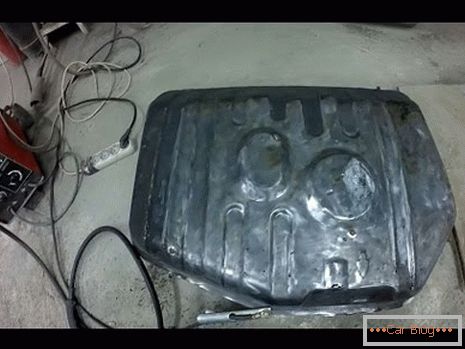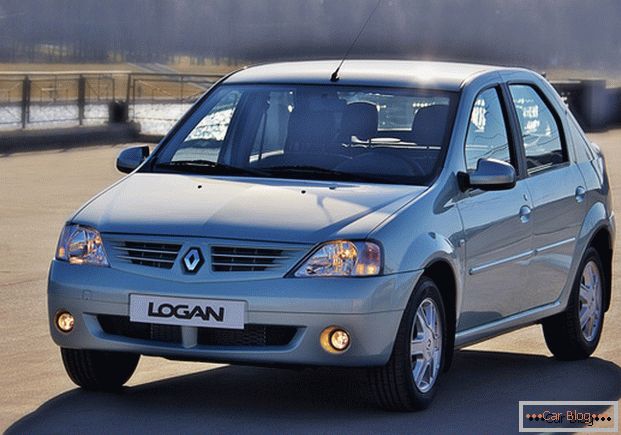In the Soviet years, when a small crack or holes were found in the gas tank, drivers, draining the fuel, widened them with a screwdriver to an oval-shaped hole. After that, they picked up a suitable bolt in diameter and twisted it, previously wrapped it with a rubber gasket (the latter was cut from the old chamber). Such repairs could be organized directly in the field and allowed at least temporarily eliminate the detected leak.
Folk way
 When examining old cars such as ZIL-130, one can see a lot of bolt plugs on their gas tanks, which indicates that this method is sufficiently effective. Nowadays, some drivers (truckers, in particular) have adopted this method of routine repairs on the road, which speaks of the vitality and effectiveness of the so-called “popular” approach to eliminating leaks.
When examining old cars such as ZIL-130, one can see a lot of bolt plugs on their gas tanks, which indicates that this method is sufficiently effective. Nowadays, some drivers (truckers, in particular) have adopted this method of routine repairs on the road, which speaks of the vitality and effectiveness of the so-called “popular” approach to eliminating leaks.
Epoxy repair
Another option to eliminate a gas tank leak on the road involves the use of a classic glass fiber and epoxy repair kit for this purpose.
Before starting the repair, it is necessary to drain the fuel from the tank and dry it thoroughly or wipe it with a rag. After that, the surface in the area of the hole or crack is carefully cleaned with a fine-grained skin and degreased with any suitable solvent.

Then a layer of glass fabric is carefully applied to the cleaned place, which is pre-impregnated with a pre-prepared epoxy resin (resin).
See also: Cleaning the carburetor with your own handsFor greater reliability after drying the patch, another layer of fiberglass is applied to it, which is formed in exactly the same way as the first one. At the final stage of the work, the restored site is treated with a special protective compound (anticorrosive).
Pay attention: You will spend no more than 3–4 hours of working time for carrying out all these operations.
In critical conditions, instead of the epoxy set, Moment glue can be used, which is used to soak the pieces of any rag material that is at hand. Rag patches are first impregnated with glue and then applied to the damaged place using the cross-to-cross method. Such a temporary option to eliminate leaks will allow you to easily “reach out” to the nearest workshop or service station.
Plastic tank recovery
As another option to repair the fuel tank in traveling conditions, we consider a method for recovering a plastic tank that has its own specifics. In this case, the method of so-called "cold" welding is clearly not suitable, since the damaged material is characterized by poor adhesion to any type of coating.
The most effective method of recovery in these conditions is a soldering method using a blowtorch, and pieces of the same plastic should be used as a solder. Add to this that the function of the reinforcing material can perform any suitable piece of fine-meshed metal mesh.
During the repair, the treated surface is first carefully cleaned, after which the mesh cut out in place is applied to the damaged area. To restore the tank, it along with pieces of plastic is melted into the damage zone by means of a blowtorch.
See also: Winter diesel fuel



